To verify the effectiveness of the proposed resonant hierarchical coordinated control method for solar inverter clusters, a simulation model of multiple solar inverters connected in parallel to the power grid was constructed in Simulink to simulate the grid connection of solar inverter clusters in civil buildings. The design of LCL filter inductance comprehensively considers the relationship between system switching frequency, resonant frequency, and grid frequency. The resonant frequency is greater than 10 times the fundamental frequency fg and less than 1/2 of the switching frequency fsw, that is, 10fg<f1<fsw/2. The function of a capacitor is to attenuate higher-order harmonics. If the value is too small, it will affect the filtering effect. If it is too small, it will cause significant power loss and low-frequency oscillation in the system. It is usually set based on the reactive power absorbed by the capacitor being less than 5% of the rated active power. This article adopts a plan for design, and the process will not be described in detail.
System simulation parameters: The filtering inductance on the solar inverter side and grid side is L11=0, respectively 6mH, L21=0 36mH, filtering capacitor C1=7 μ F. The equivalent impedance of the power grid Lg=1mH, the voltage of the power grid Ug=220V, the DC side voltage Udc=600V, the switching frequency fsw=15kHz, the rated power of the grid connection P=15kW, and the proportion coefficient and time constant of the inertia link A=0 005, T=4 × 10-5, virtual admittance adjustment coefficient H=0 55.
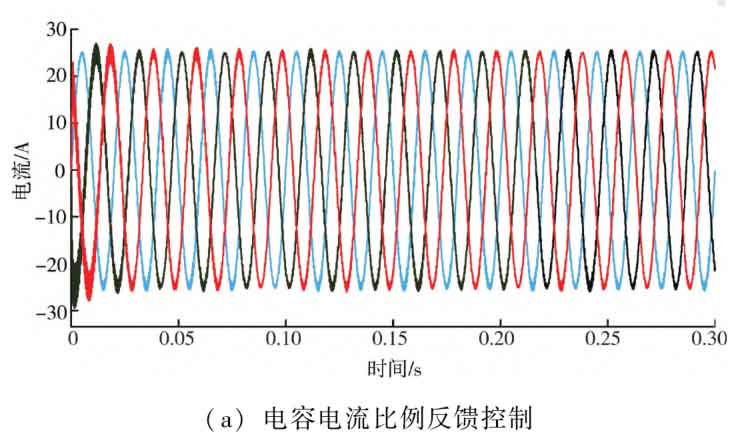
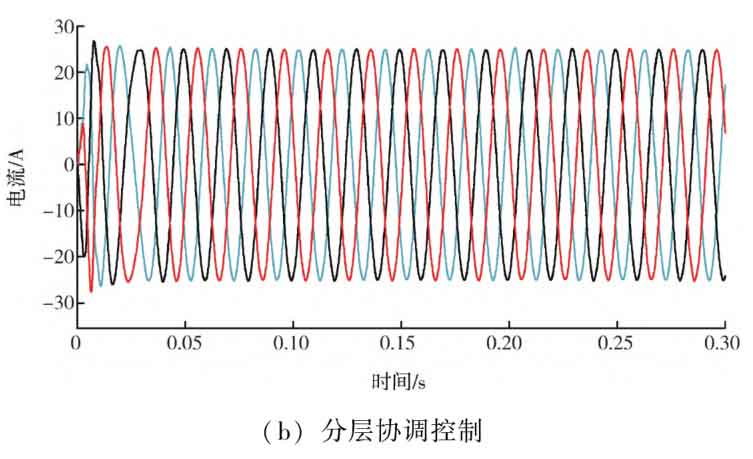
Figures 1 and 2 show the waveform of grid connected current using traditional capacitive current proportional feedback control and the hierarchical coordinated control proposed in this paper when 2 and 4 solar inverters are connected in parallel. By comparison, it can be seen that the traditional capacitor current proportional feedback control strategy has poor waveform quality and still has high distortion when connected to the grid. By adopting the hierarchical coordinated control strategy proposed in this article, the current waveform has been greatly improved, and the quality of grid connected current is relatively high.
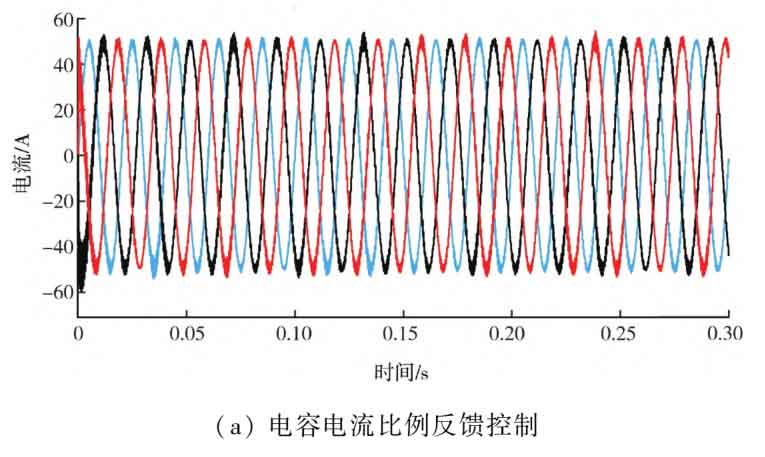
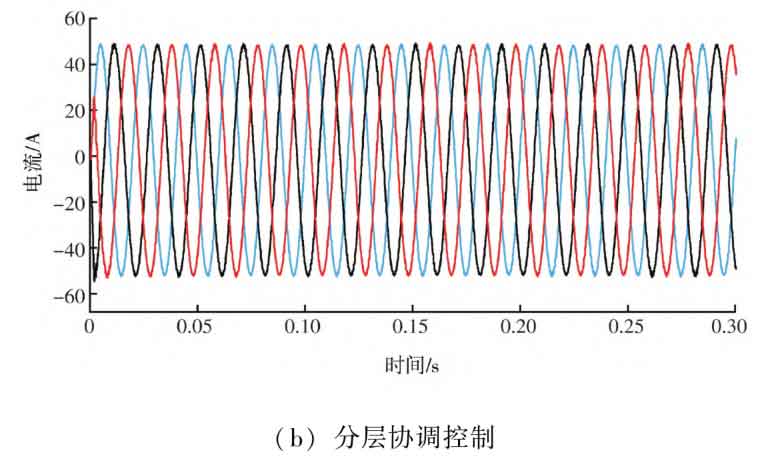
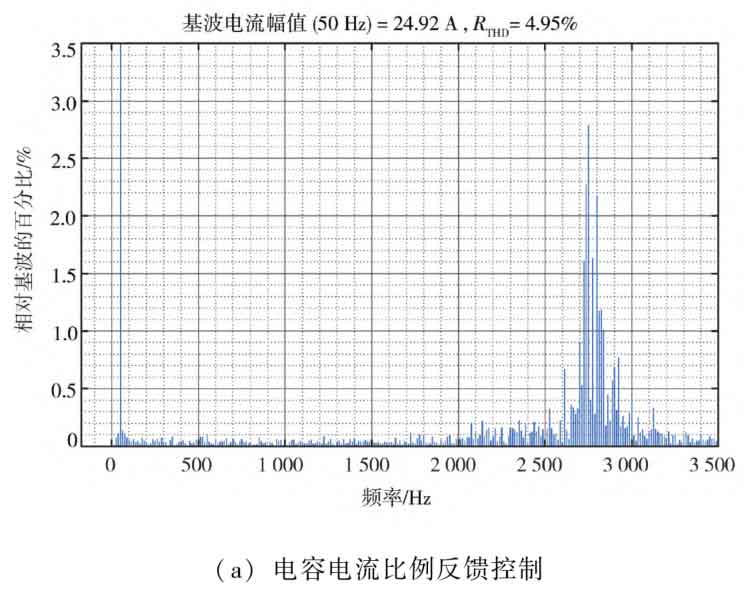
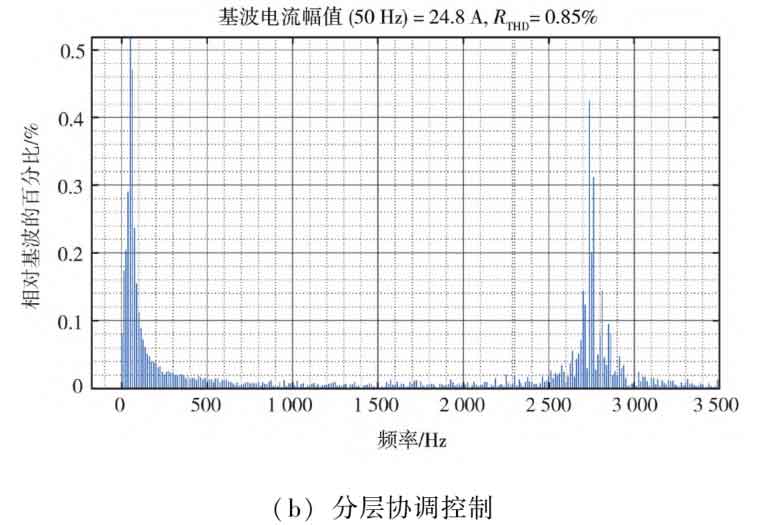
By Fourier analysis, the total harmonic distortion rate (RTHD) of grid connected current when 2 or 4 solar inverters are connected in parallel is shown in Figures 3 and 4. The total harmonic distortion rate (RTHD) of the grid connected current in traditional capacitive current proportional feedback control is 4 95% and 5 63%, the total harmonic distortion rate (RTHD) of the grid connected current in the control strategy proposed in this article is 0 85% and 1 52%, the coupling resonance between the solar inverter cluster and the grid impedance is effectively suppressed, and the harmonic content of the grid connected current is less than 5%, meeting the grid connection requirements.
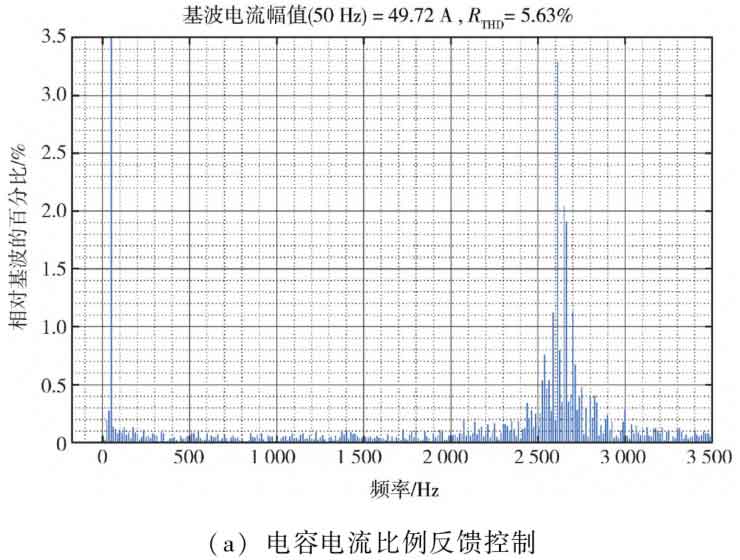
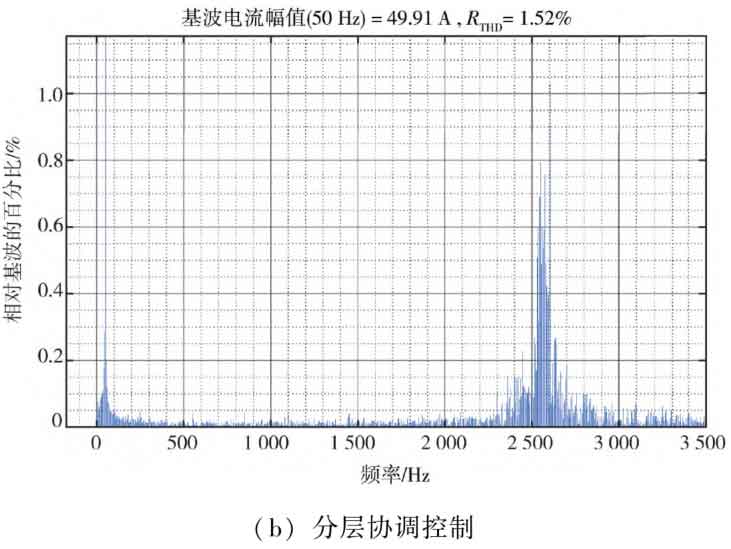
Figure 5 shows the dynamic grid connected current waveform using a layered coordinated control strategy when two solar inverters are connected in parallel, 0 1 second ago, due to the use of a layered coordinated control strategy, the quality of the current waveform was good; 0 At 1 second, the PCC point parallel virtual admittance strategy was removed. Due to the resonance generated by the impedance coupling between the solar inverter cluster and the power grid, the current began to distort; 0 At 2 seconds, the capacitor voltage inertia feedback control strategy based on forward channel series notch filters is removed. Due to the combined effect of the inherent resonance of the solar inverter and the impedance coupling resonance of the solar inverter cluster and the power grid, the current oscillates sharply, and the system will not be able to operate normally at this time.
Figure 6 shows the waveform of the grid connected current and voltage of the solar inverter when the current reference value jumps. It can be seen that when t=0 05s and t=0 2 seconds, the current reference value is at 37 5A to 50 When there is a jump between 0A, the grid connected current can quickly track the change in command current, indicating that the hierarchical coordinated control method proposed in this paper enables the grid connected solar inverter to have good dynamic performance.
In response to the resonance problem caused by solar inverter clusters in civil buildings, the mechanism of resonance generation was explored. A hierarchical coordinated control strategy based on forward channel series notch filter capacitor voltage inertia feedback and PCC point parallel virtual admittance was proposed, and simulation verification was conducted. The following conclusions were drawn.
1) Compared with traditional capacitor current feedback control strategies, using a capacitor voltage inertia feedback control strategy based on forward channel series notch filters can reduce one current sensor, optimize damping effect by adding notch filters, improve control accuracy, reduce system costs, and enhance system reliability.
2) The resonant hierarchical coordinated control strategy proposed in this article can effectively suppress the inherent resonance of LCL solar inverters and the global resonance caused by the impedance interaction coupling between the solar inverter cluster system and the power grid. The output current quality is high and meets the requirements of grid connection.
